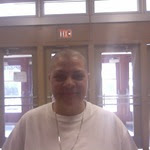Day Four Tuesday From Walled Gardens to Authentic Approaches
Image via Wikipedia
I was kind of expecting to see free range students plucking tools from the Internet to solve real world problems collaboratively. What I got was teachers using technology to control the content their students could work from to complete rigid and structured lessons.
Way back on day 1, Saturday for me, I caught the end of the discussion on iPads and their role in education. The debate there was that some felt that iPads were more suited to consumers and didn’t allow for the creation of content. Thus they restricted the ability of student to SHOW what they learned. Others felt that not every tool needed to be a Swiss Army knife. At times students would be asked to build content that could be assessed, but at other times the size, simplicity, and speed of an iPad would be better than a full strength laptop.
This “No Paper? No Problem” group fell into a third category. They fall into what I call the “we want to point our learning to a specific goal and chart the shortest and fastest route to that goal” group. Is that how they see themselves, I doubt it. I’m sure they see themselves more along the lines of doing a great job in meeting the standards set forth by the governing bodies. We are the best teachers in the state because we have the highest test scores. As a matter they claimed proof that their methods work because one of the presenters did have the top scores in the state.
Was the entire session completely without merit? No, I did like the idea feature of the platform they were using that allowed the teacher to see a thumbnail of every student’s computer. I know I could set up something similar in just about any computer lab, but sometimes having something developed and managed for you just makes life easier. (I think that’s why some many people like Macs they work and synch with all things Mac with almost no fuss)
It wasn’t the monitoring of the student’s computers that I liked it was the fact that she would project the screen onto the wall and let the students monitor each other. She also did this during discussions. Students would then make sure everyone participated in the discussion and didn’t slack off.
I was most disappointed in their seeming glee in the fact that one student was removed from the program because he managed to break the security and explore sites that were inappropriate.
About an hour later I went to Creativity and Standards: Amazing Authentic Approaches presented by Annette Lamb alamb@eduscapes.com. Her outline can be found here eduscapes.com/sessions/creativity
Basically she wanted to present some ways teachers could meet the NETS 1 standard of creativity and innovation. She wanted to show us ways that teachers can help students demonstrate creative thinking and construct knowledge.
Start by thinking different. Think visually, she lists several different visual dictionaries and thesauruses. Allow students to explore them and then create their own visual dictionaries, or create vocabulary videos.
Provide options, which she did in spades, If students can’t or don’t draw, give them options of create animations online using the stock images they provide.
Model, I don’t know about you, but I was always taught to model the behavior I wanted. Model behavior, learning, exploring, thinking, and anything else I wanted my students to exhibit in the classroom.
The world is rich in resources, so why do we limit ourselves to the textbook bought by the district. Infuse the classroom with a variety of resources. Novels, graphic novels, comics, editorial cartoons, sketches, caricatures, and more are out there waiting to be used. Find them and show them to your class. Then why not let them surprise you with what they can find or create.
Scaffolding creativity. This was repeated in the unplugged session I attended next. Basically, if you throw everything at your students they will be overwhelmed and return to you a copy and paste. Model the use of one tool and then ask the students to use it. Later, after they are comfortable using the tool, you can ask them to be more imaginative in their creations.
Use the tools to be a more creative teacher. As you can from Annette’s website being a creative teacher means being:
Generative
Imaginative
Ingenious
Innovative
Inventive
Originative
Productive
Progressive
She provides a nice definition and explains at least one way to make it authentic in your classroom. The rest of the work along that front is up to you.
Conclusion (direct from her website)
Be a model. Use the technologies you plan to integrate into your classroom. Explore our Graphic Inquiry project.
Facilitate learning by creating pathfinders, learning guides, and WebQuest. Explore the Leviathan pathfinder.
Finally, get outside with your digital camera, create a comic, or contribute to an online discussion.
This was a great BYOL session. She had practical ideas to use in the classroom supported by several resources to use to create great artifacts. Everything showed how the NETS 1 standard applies to the student-centered classroom.
If you are like me and you like to see how people take this philosophy of student-centered technological rich classrooms and use it everyday in ways that are elastic and yet at the same time focused directly on reaching learning objectives this was the session for you.

Comments